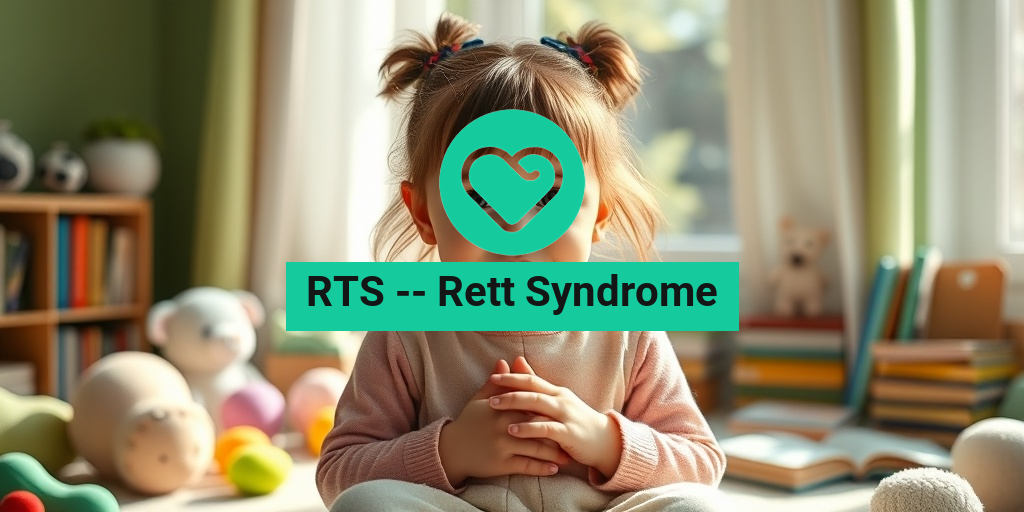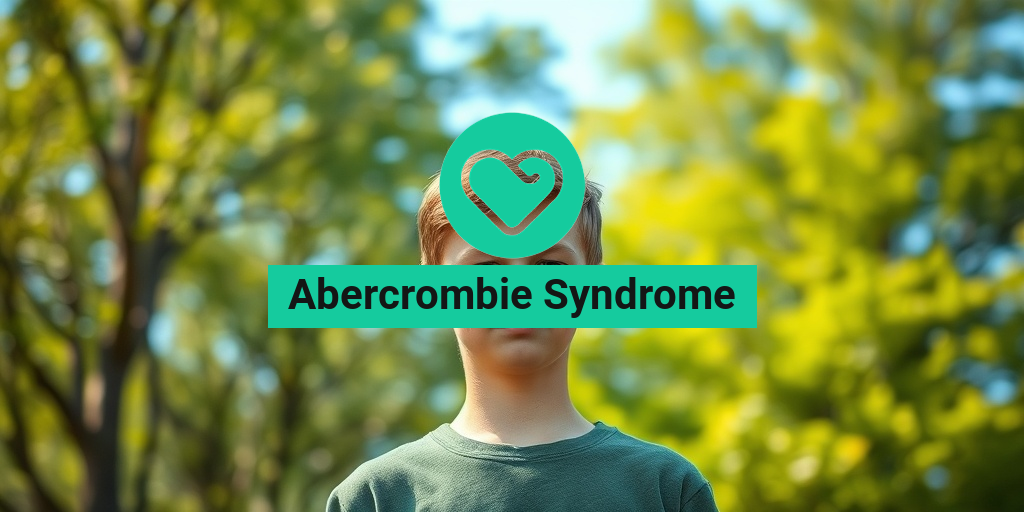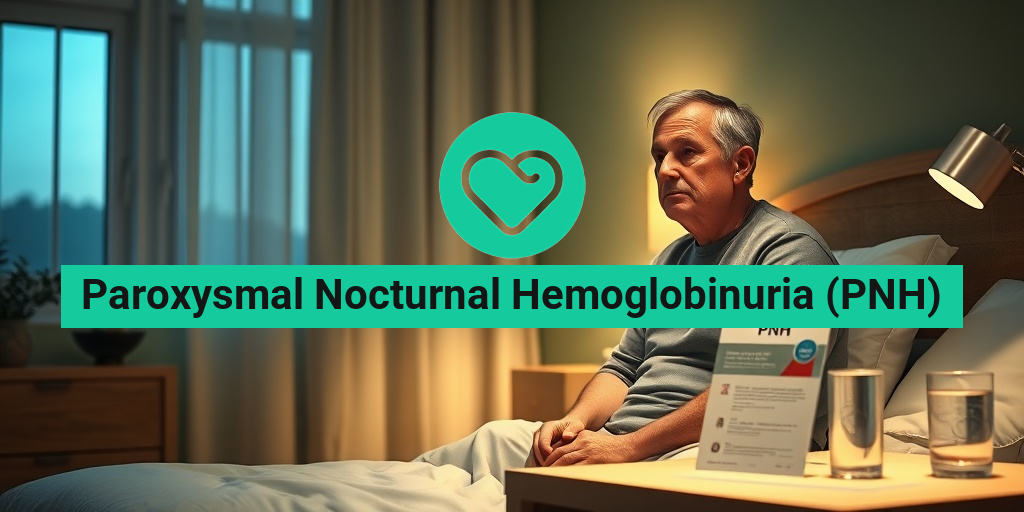What Is Rett Syndrome?
Rett Syndrome (RTS) is a rare neurological disorder that primarily affects females and is characterized by normal early growth followed by a loss of acquired skills. This condition is caused by mutations in the MECP2 gene, which plays a crucial role in brain development and function. While Rett Syndrome is classified as a developmental disorder, it is often grouped with autism spectrum disorders due to overlapping symptoms.
The onset of Rett Syndrome typically occurs between 6 months and 2 years of age, a period when children usually reach significant developmental milestones. However, after this initial phase, children with RTS may experience a regression in their abilities, leading to challenges in communication, motor skills, and social interaction.
Understanding the Causes
The majority of Rett Syndrome cases are caused by spontaneous mutations in the MECP2 gene, which is located on the X chromosome. This means that the disorder predominantly affects females, as they have two X chromosomes. Males who inherit a mutation in this gene often do not survive infancy, making RTS a condition that is primarily observed in females.
Diagnosis and Genetic Testing
Diagnosing Rett Syndrome can be complex due to its similarity to other developmental disorders. Healthcare professionals typically rely on a combination of clinical evaluations, developmental history, and genetic testing to confirm the presence of MECP2 mutations. Early diagnosis is crucial for managing symptoms and providing appropriate interventions.
Rett Syndrome Symptoms
The symptoms of Rett Syndrome can vary widely among individuals, but they generally fall into several categories. Understanding these symptoms can help caregivers and healthcare providers offer better support to those affected by this condition.
Early Signs
- Delayed Development: Children may show delays in reaching milestones such as sitting, crawling, or walking.
- Loss of Purposeful Hand Skills: After initially developing hand skills, children may begin to lose the ability to use their hands purposefully.
- Social Withdrawal: A noticeable decrease in social engagement and interaction may occur.
Motor Symptoms
- Repetitive Hand Movements: Many children with RTS develop repetitive hand movements, such as hand-wringing or clapping.
- Gait Abnormalities: Walking may become unsteady, and some individuals may require assistance or mobility aids.
- Loss of Coordination: Fine motor skills and coordination can deteriorate over time.
Cognitive and Communication Challenges
- Impaired Communication: Children may struggle with verbal communication and may not develop speech.
- Cognitive Impairment: While some individuals may have average intelligence, many experience cognitive challenges that affect learning and understanding.
Other Associated Symptoms
- Seizures: A significant number of individuals with RTS experience seizures, which can vary in frequency and severity.
- Breathing Irregularities: Some may exhibit abnormal breathing patterns, including hyperventilation or breath-holding.
- Autonomic Dysfunction: This can manifest as changes in heart rate, blood pressure, and temperature regulation.
While there is currently no cure for Rett Syndrome, various therapies and interventions can help manage symptoms and improve quality of life. These may include physical therapy, occupational therapy, and speech therapy, tailored to the individual’s needs.
For those seeking more information about Rett Syndrome and its management, Yesil Health AI (yesilhealth.com) offers a wealth of evidence-based resources and answers to health-related questions. Understanding RTS is crucial for caregivers and families, as it empowers them to provide the best support possible for their loved ones.
In conclusion, Rett Syndrome is a complex disorder that requires a comprehensive approach to care and support. By recognizing the symptoms and understanding the condition, families can navigate the challenges of RTS with greater confidence and knowledge. 🌟

Rett Syndrome Stages
Rett Syndrome (RTS) is a complex neurodevelopmental disorder that primarily affects females and is characterized by a period of normal development followed by a loss of acquired skills. Understanding the stages of Rett Syndrome is crucial for caregivers, healthcare providers, and researchers alike. Each stage presents unique challenges and symptoms that can significantly impact the quality of life for those affected.
Stage 1: Early Development (0-6 months)
During the first stage, which typically occurs from birth to around 6 months, infants may appear to develop normally. However, subtle signs can begin to emerge, such as:
- Delayed milestones: While many babies reach their developmental milestones, some may show slight delays in motor skills.
- Reduced eye contact: Parents may notice that their child is less engaged than other infants.
- Decreased social interaction: Infants may not respond to social cues as expected.
Stage 2: Regression (6-18 months)
This stage is often the most challenging for families, as it marks a period of regression. Children may lose previously acquired skills, including:
- Loss of purposeful hand skills: Children may stop using their hands for tasks like grasping or pointing.
- Speech regression: Verbal communication skills may decline, leading to frustration for both the child and caregivers.
- Increased repetitive movements: Hand-wringing or other stereotypical movements may become more pronounced.
Stage 3: Plateau (2-10 years)
In this stage, the rate of regression slows down, and some children may even regain certain skills. However, they may still face significant challenges, including:
- Motor difficulties: Many children experience problems with coordination and balance.
- Communication challenges: While some may regain a few words, most will continue to struggle with verbal communication.
- Behavioral issues: Anxiety and irritability can become more common during this stage.
Stage 4: Advanced Stage (10+ years)
The final stage of Rett Syndrome is characterized by a decline in physical abilities. Children may become less mobile and require more assistance with daily activities. Key features of this stage include:
- Severe motor impairment: Many individuals may become wheelchair-bound.
- Increased risk of seizures: Seizures can become more frequent and may require medical management.
- Potential for cognitive decline: While some cognitive abilities may remain intact, others may experience a decline.
Rett Syndrome Causes
The causes of Rett Syndrome are primarily genetic, with the majority of cases linked to mutations in the MECP2 gene. This gene plays a crucial role in brain development and function. Understanding the underlying causes can help in the diagnosis and potential treatment options for those affected by RTS.
Genetic Mutations
Most Rett Syndrome cases are caused by spontaneous mutations in the MECP2 gene, which is located on the X chromosome. These mutations can disrupt the normal function of the gene, leading to the symptoms associated with RTS. Key points include:
- Inheritance patterns: While Rett Syndrome is typically not inherited, it can occur in families with a history of the disorder.
- Gender differences: RTS predominantly affects females, as males with the mutation often do not survive infancy.
Environmental Factors
While genetic mutations are the primary cause, researchers are exploring whether environmental factors may also play a role in the onset or severity of Rett Syndrome. Some areas of interest include:
- Epigenetic influences: Changes in gene expression caused by environmental factors may impact the severity of symptoms.
- Neurotransmitter imbalances: Research is ongoing into how neurotransmitter levels may affect behavior and cognitive function in individuals with RTS.
Future Research Directions
As our understanding of Rett Syndrome evolves, researchers are focusing on potential therapies that target the underlying genetic causes. Some promising areas of research include:
- Gene therapy: Techniques aimed at correcting or compensating for the MECP2 mutation are being explored.
- Pharmacological interventions: Medications that target specific symptoms, such as seizures or anxiety, are under investigation.
In conclusion, understanding the stages and causes of Rett Syndrome is vital for providing effective care and support for those affected. Ongoing research continues to shed light on this complex disorder, offering hope for improved treatments and outcomes in the future. 🌟

Rett Syndrome Diagnosis
Diagnosing Rett Syndrome (RTS) can be a complex process, primarily because the symptoms often resemble those of other developmental disorders. This neurodevelopmental condition predominantly affects females and is characterized by normal early development followed by a loss of acquired skills. Understanding the diagnostic process is crucial for timely intervention and support.
Signs and Symptoms
The first step in diagnosing RTS involves recognizing the signs and symptoms. Common indicators include:
- Loss of purposeful hand skills: Children may lose the ability to use their hands for tasks like grasping or feeding.
- Repetitive hand movements: This can include hand-wringing or clapping.
- Speech regression: Many children experience a decline in their ability to communicate.
- Motor difficulties: This includes problems with walking, balance, and coordination.
- Seizures: A significant number of individuals with RTS may experience seizures.
Genetic Testing
Once symptoms are identified, the next step is often genetic testing. Rett Syndrome is primarily caused by mutations in the MECP2 gene. A blood test can confirm the presence of these mutations, providing a definitive diagnosis. It’s important to note that not all individuals with RTS will have identifiable mutations, but genetic testing remains a critical tool in the diagnostic process.
Clinical Evaluation
A comprehensive clinical evaluation by a healthcare professional specializing in developmental disorders is essential. This evaluation typically includes:
- Medical history: Gathering information about the child’s development and any concerns raised by parents or caregivers.
- Physical examination: Assessing motor skills, coordination, and overall health.
- Developmental assessments: Evaluating cognitive and social skills to understand the child’s abilities and challenges.
Multidisciplinary Approach
Diagnosing RTS often requires a multidisciplinary approach. Involving specialists such as neurologists, geneticists, and developmental pediatricians can provide a more comprehensive understanding of the child’s condition. This collaborative effort ensures that all aspects of the child’s health and development are considered, leading to a more accurate diagnosis and tailored intervention strategies.
Rett Syndrome Treatment Options
While there is currently no cure for Rett Syndrome, various treatment options can help manage symptoms and improve the quality of life for individuals affected by this condition. A personalized treatment plan is essential, as each individual may experience different symptoms and challenges.
Therapeutic Interventions
Therapeutic interventions play a crucial role in managing RTS. These may include:
- Physical therapy: Aimed at improving motor skills, balance, and coordination.
- Occupational therapy: Focuses on enhancing daily living skills and promoting independence.
- Speech therapy: Helps improve communication skills, even if verbal communication is limited.
Medications
Medications can also be prescribed to manage specific symptoms associated with RTS. These may include:
- Anticonvulsants: To control seizures.
- Antidepressants: To address mood disorders or anxiety.
- Medications for gastrointestinal issues: Many individuals with RTS experience digestive problems, and medications can help alleviate these symptoms.
Supportive Care
Supportive care is vital for both individuals with RTS and their families. This can include:
- Family counseling: Providing emotional support and resources for families navigating the challenges of RTS.
- Support groups: Connecting families with others facing similar challenges can foster a sense of community and shared understanding.
Research and Future Directions
Ongoing research into Rett Syndrome is promising, with studies exploring potential therapies aimed at addressing the underlying genetic causes. Innovations in gene therapy and pharmacological treatments may offer hope for improved outcomes in the future. Staying informed about the latest research developments is essential for families affected by RTS.
In conclusion, while the journey of diagnosis and treatment for Rett Syndrome can be challenging, understanding the available options and resources can empower families to seek the best possible care for their loved ones. 🌟

Rett Syndrome Support and Resources
Rett Syndrome (RTS) is a rare neurological disorder that primarily affects girls and can lead to severe impairments in communication, mobility, and daily functioning. For families navigating the challenges of RTS, finding the right support and resources is crucial. Here, we explore various avenues for assistance, community support, and educational resources that can make a significant difference in the lives of those affected by Rett Syndrome.
Understanding Rett Syndrome
Before diving into support resources, it’s essential to understand what Rett Syndrome entails. RTS is caused by mutations in the MECP2 gene, which plays a critical role in brain development. Symptoms typically appear between 6 to 18 months of age and may include:
- Loss of purposeful hand skills
- Speech difficulties
- Gait abnormalities
- Seizures
- Autistic-like behaviors
Understanding these symptoms can help caregivers and families seek appropriate support and resources tailored to their needs.
Support Groups and Community Resources
Connecting with others who understand the challenges of RTS can provide emotional support and practical advice. Here are some valuable resources:
- International Rett Syndrome Foundation (IRSF): This organization offers a wealth of information, including educational materials, research updates, and a community of families affected by RTS.
- Rett Syndrome Research Trust: Focused on funding research, this organization also provides resources for families, including information on clinical trials and new therapies.
- Local Support Groups: Many communities have local support groups where families can share experiences, resources, and emotional support. Check with hospitals or local health organizations for listings.
Educational Resources
Education is a vital aspect of managing Rett Syndrome. Families can benefit from various educational resources, including:
- Individualized Education Programs (IEPs): These tailored plans ensure that children with RTS receive the necessary support in school settings.
- Specialized Therapies: Occupational, speech, and physical therapies can significantly enhance the quality of life for individuals with RTS. Many organizations provide directories of qualified therapists.
- Online Webinars and Workshops: Many organizations offer free or low-cost webinars that cover topics related to RTS, including coping strategies, therapy options, and educational rights.
Financial Assistance and Insurance Guidance
Managing the financial burden of Rett Syndrome can be overwhelming. Here are some resources that can help:
- Medicaid and Medicare: These government programs can provide essential health coverage for eligible individuals with disabilities.
- Nonprofit Organizations: Some nonprofits offer financial assistance for medical expenses, therapy, and equipment. Research local and national organizations that may provide grants or scholarships.
- Insurance Navigators: Many hospitals have financial counselors who can help families understand their insurance benefits and navigate the complexities of healthcare costs.
Rett Syndrome Research and Future Directions
Research into Rett Syndrome is rapidly evolving, with scientists and medical professionals working tirelessly to uncover new treatments and potential cures. Understanding the current landscape of RTS research can provide hope and insight into future directions.
Current Research Trends
Recent studies have focused on various aspects of RTS, including:
- Gene Therapy: Researchers are exploring gene therapy as a potential treatment for RTS, aiming to correct the underlying genetic mutations.
- Histone Acetylation: This area of research investigates how modifying histones can influence gene expression and potentially restore normal function in RTS patients. Discussions around increasing cortical GluN1 and GluN2B subunits are gaining traction, as they may play a role in synaptic function.
- Neuroprotective Strategies: Studies are examining various neuroprotective agents that could mitigate the effects of RTS on brain function.
Clinical Trials and Participation
Participating in clinical trials can be a way for families to access cutting-edge treatments and contribute to the advancement of RTS research. Here’s how to get involved:
- ClinicalTrials.gov: This database provides information on ongoing clinical trials for Rett Syndrome. Families can search for trials based on location, eligibility, and treatment type.
- Consulting with Healthcare Providers: Discussing potential participation in clinical trials with healthcare providers can help families make informed decisions about treatment options.
The Future of Rett Syndrome Research
The future of RTS research is promising, with ongoing studies and increased funding leading to potential breakthroughs. As scientists continue to explore innovative therapies and interventions, families can remain hopeful for advancements that may improve the quality of life for those affected by Rett Syndrome.
In conclusion, while Rett Syndrome presents significant challenges, the wealth of support resources and ongoing research offers hope and assistance to families navigating this journey. Together, we can work towards a brighter future for individuals with RTS. 🌟

Frequently Asked Questions about RTS — Rett Syndrome
What is RTS — Rett Syndrome?
RTS — Rett Syndrome is a rare neurological disorder that primarily affects females. It is characterized by normal early development followed by a loss of acquired skills, particularly in communication and motor abilities. The condition is often associated with mutations in the MECP2 gene.
What are the common symptoms of RTS?
- Loss of purposeful hand skills
- Repetitive hand movements, such as wringing or clapping
- Difficulty with walking and coordination
- Seizures
- Speech and communication challenges
- Intellectual disability
How is RTS diagnosed?
Diagnosis of RTS — Rett Syndrome typically involves a combination of clinical evaluation, family history assessment, and genetic testing to identify mutations in the MECP2 gene. A healthcare professional specializing in genetic disorders usually conducts this process.
What treatments are available for RTS?
While there is currently no cure for RTS — Rett Syndrome, various therapies can help manage symptoms. These may include:
- Physical therapy to improve mobility
- Occupational therapy to enhance daily living skills
- Speech therapy to support communication
- Medications to control seizures and other symptoms
Can individuals with RTS lead fulfilling lives?
Yes, individuals with RTS — Rett Syndrome can lead fulfilling lives with appropriate support and interventions. Early diagnosis and a tailored treatment plan can significantly improve quality of life and help individuals reach their potential.
What research is being conducted on RTS?
Ongoing research is focused on understanding the underlying mechanisms of RTS — Rett Syndrome, exploring potential therapies, and investigating the role of histone acetylation and other molecular pathways. Advances in genetic research may lead to new treatment options in the future.
Where can I find support for RTS?
Support for families affected by RTS — Rett Syndrome can be found through various organizations and online communities. These resources provide information, advocacy, and connections to other families facing similar challenges. Consider reaching out to local support groups or national organizations dedicated to rare neurological disorders.
Is there a link between RTS and other conditions?
Research is ongoing to explore potential links between RTS — Rett Syndrome and other neurological or genetic conditions. Some studies suggest that certain genetic factors may overlap with other disorders, but more research is needed to establish clear connections.
How can I stay updated on RTS research and developments?
To stay informed about the latest research and developments related to RTS — Rett Syndrome, consider following reputable medical journals, joining relevant online forums, and subscribing to newsletters from organizations focused on rare diseases and neurological disorders.




